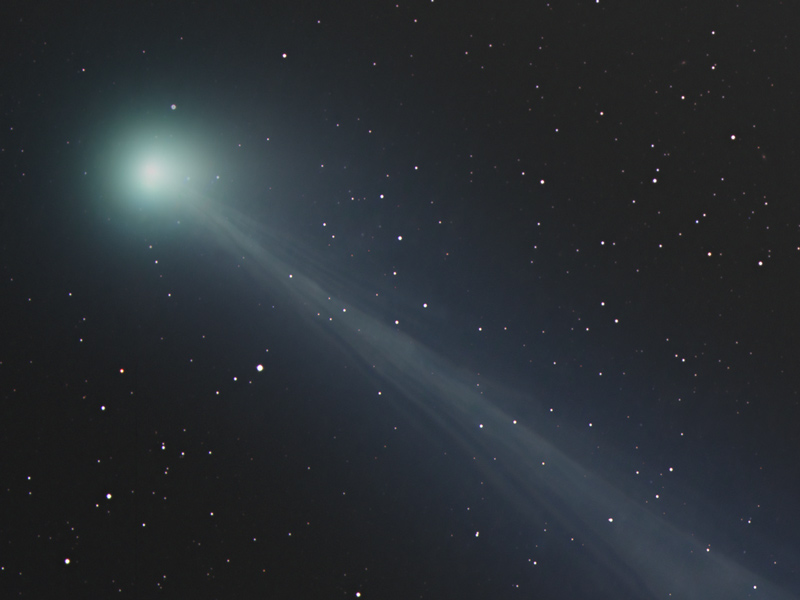
|
Credit & Copyright: Ray Gralak
Explanation:
What causes the structure in Comet SWAN's tail?
Comet SWAN,
which unexpectedly flared up to naked-eye brightness last week, has been
showing detail in its
ion tail that might be described as
ghostly.
The ion tail is made of
ionized gas, energized by ultraviolet light from the Sun and pushed outward by the
solar wind.
The solar wind
itself is quite structured and sculpted by the Sun's complex and ever changing
magnetic field.
Following the wind, structure in Comet SWAN's
tail
can be seen to
move
outward
from the Sun even alter its wavy appearance over time.
The blue color of the ion tail is dominated by recombining
carbon monoxide
atoms.
The color of the coma surrounding the head of the comet is tinged green by
slight amounts of the molecule
cyanogen.
The above image was taken last week from California, USA.
This week may be the best remaining chance for northern hemisphere
observers to see the fading
interplanetary snowball.
SWAN
has now past both the Earth and the Sun and will fade as it moves away
from the Earth and heads out into the vast space between the stars.
|
January February March April May June July August September October November December |
| ||||||||||||||||||||||||||||||||||||||||||||||||
NASA Web Site Statements, Warnings, and Disclaimers
NASA Official: Jay Norris. Specific rights apply.
A service of: LHEA at NASA / GSFC
& Michigan Tech. U.
Based on Astronomy Picture
Of the Day
Publications with keywords: Comet Swan
Publications with words: Comet Swan
